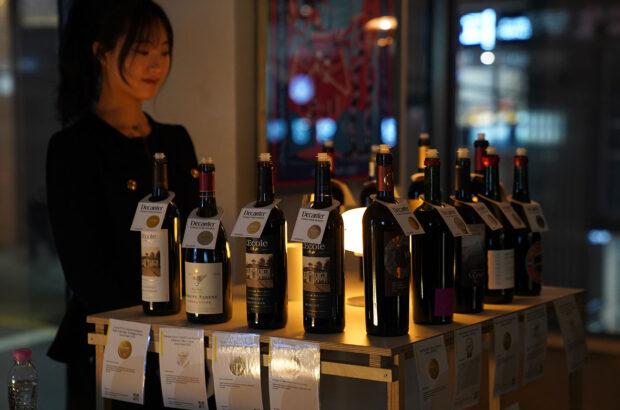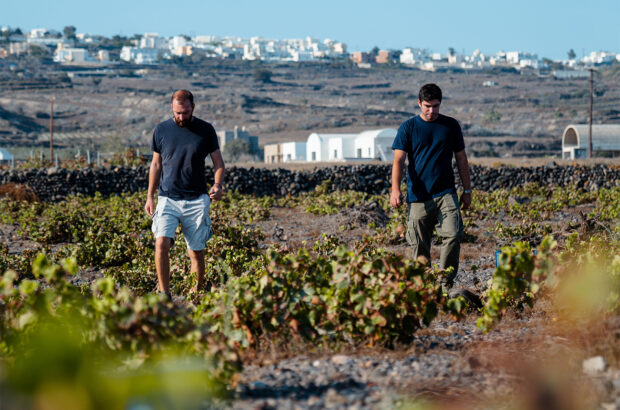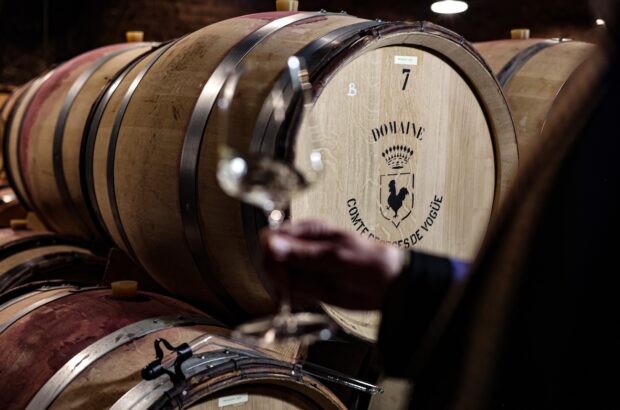More and more of us are choosing to incorporate no/low options into our downtime, both out and at home, a switch that Beatrice Bessi, head sommelier at London’s Chiltern Firehouse, likens to the rise in plant-based eating. ‘No and low options aren’t kept separate, for those who never drink [as vegetarian menus once were, for non-carnivores],’ she says. ‘They’re now mainstream, for everyone.’
In bars, no/low beers and cocktails, and aperitifs such as Botivo are on the up. For instance, Soho House’s no/low drinks offering across all its locations now comprises 30% of the menu. ‘A standout for me is the Skinny Tommy’s Margarita, made with Quarter-Proof’s Blanco Agave spirit,’ says Cyril Françoise, Soho House’s head of bars for the UK, Europe and Asia.
Personal touch
When it comes to fine dining and food matching, on the other hand, the approach to no/low often takes its cue from the way in which the kitchen manages the food menu. This means bespoke drinks, made from the best ingredients and often involving handmade syrups, tonics, infusions and juices.
‘At Spring [in Somerset House, London], we always have a seasonal house-made soda, made from fruit, freshly cooked each morning,’ says head chef Eleanor Henson. ‘Moving through the year, we serve rhubarb, white peach and lemon verbena, strawberry, apple and melon, to name a few. We also have a house tonic, made using quinine, orange flower water and raw acacia honey. Its bitter quality cuts through the clean, fresh flavours of each dish we serve in the restaurant and is perfect to combine with recipes such as horseradish crème fraiche or wild nettle risotto with ricotta salata.’

The seasonal soda and house tonic at Spring, Somerset House
For the non-alcoholic version of the seven-course pairing menu at Michelin three-star Hélène Darroze at the Connaught, head of wine Lucas Reynaud-Paligot has sourced ‘products freshly ground, crushed, infused and pressed’. He pairs a herbaceous blend of cucumber juice, fresh fennel and thyme infusion with red mullet, Piedmont hazelnuts, rhubarb and argan oil. Grapes do get a look-in, but not in their fermented form: instead, Reynaud-Paligot has gone for a full-flavoured blend of beetroot, Coeur de Boeuf tomato, Merlot juice, celery, Worcestershire sauce and Tasmanian black pepper, and matched it with a choice of pigeon with peas, fresh wasabi, black garlic and kiwi or A5 Wagyu beef from Gunma prefecture, Japan.

Red mullet, Piedmont hazelnuts, rhubarb and argan oil at Hélène Darroze
Flavour of the moment
For home cooks who don’t wish to rustle up their own tonic or finely honed blend of juices and infusions, the Hélène Darroze menu offers a nod to the ready-made product that sommeliers love: kombucha (fermented tea), whose tangy edge Reynaud-Paligot pairs with brill and green asparagus. Sparkling tea is also winning over the somm crowd because, like wine, it has provenance and fine, complex flavours that can work well with food.
What’s the difference between kombucha and sparkling tea? Sparkling tea isn’t necessarily fermented; it can simply be carbonated tea, which may be blended with other ingredients, though some kombucha brands (such as Real) prefer to market themselves as sparkling tea. Harry Cooper, general manager and head sommelier at Counter 71 in Shoreditch, London, has done a lot of work with Saicho sparkling tea, and says the pairing options are particularly appreciated by those who come from strong tea cultures.
Hero products & great pairings
Jukes 6 The Sparkling Red
Writer Matthew Jukes developed his eponymous range of 0% drinks using an apple cider vinegar base (like a shrub syrup), flavoured with beautifully nuanced blends of plant ingredients. Both the Ledbury and Trinity Restaurant use the World Alcohol-Free Awards gold medal-winning Jukes 6 in their own creative drinks; it’s also delicious poured on its own, and loves barbecued meats, pulled pork and roast duck.
£4-£5/25cl Hic, Parched, YappBros

Romain des Grottes L’Antidote
A gorgeous, herb-scented sparkling drink made by a winemaker using the (unfermented) juice of Beaujolais-grown Gamay grapes and infusions of herbs from his vineyard and garden (the thyme is the first you pick out, strongly, on the nose, but also rosemary, oregano, bay, lemon verbena and others). I was put onto this by the sommelier at the Palomar restaurant in Soho, who said they sell so much of it they can’t keep it in stock and that its herbal notes go very well with the Palomar’s Spanish/Levant/North Africa-influenced food. With 70-80g/L of residual sugar, it isn’t dry, but I love it with aubergine, tomatoes and red peppers fried with thyme and garlic.
£15-£18.95/75cl Gnarly Vines, Hamblin Bread, Kerb, Neal’s Yard Dairy, Tiny’s Tipple, Wright’s Wines
Saicho Hojicha Sparkling Tea
Hojicha is a roasted green tea from Japan and here it’s cold-brewed and blended with grape juice to create a toasty, effervescent drink rich in smoky, umami flavours. Saicho co-founder Charlie Winkworth-Smith loves to drink it with mushroom risotto. Its roasted notes also work well with turbot with nutty herb butter.
£20/75cl Harrods, or £17.99 at saichodrinks.com












